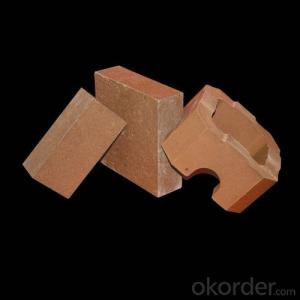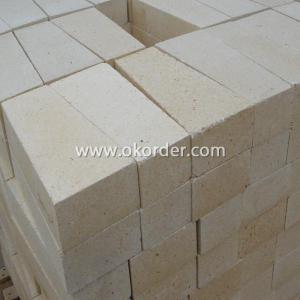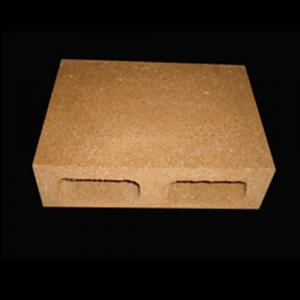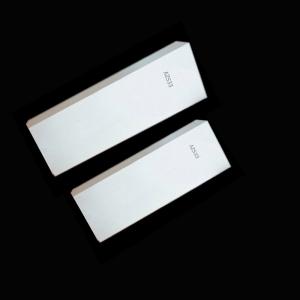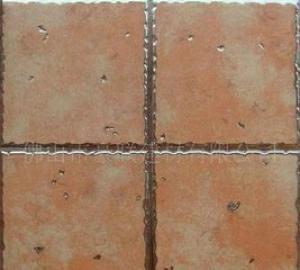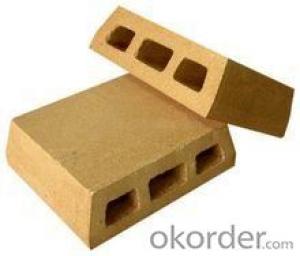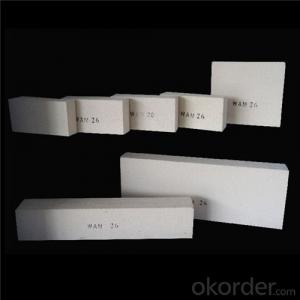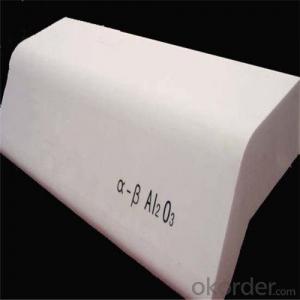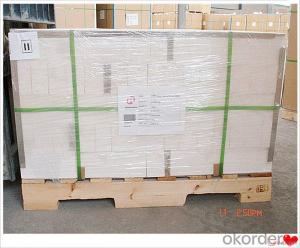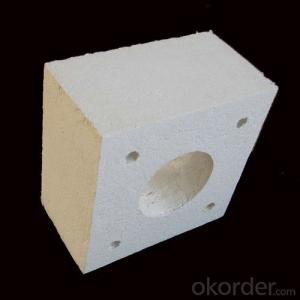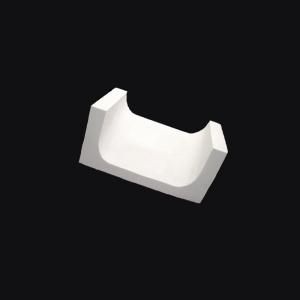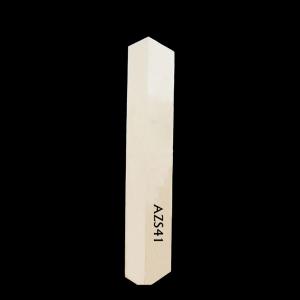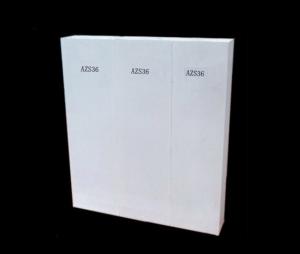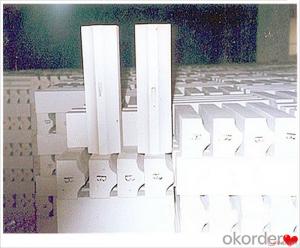Magnesite Refractories Brick for Cement and Non-ferrous
- Loading Port:
- Qingdao
- Payment Terms:
- TT OR LC
- Min Order Qty:
- 10 m.t.
- Supply Capability:
- 100000 m.t./month
OKorder Service Pledge
OKorder Financial Service
You Might Also Like
ITEM | MgO BRICK | |||||
HLMZ91 | HLMZ92 | HLMZ95A | HLMZ95B | HLMZ97A | HLMZ97B | |
MgO%≥ | 91 | 92 | 94.5 | 96 | 97 | 97.5 |
CaO%≤ | 3.0 | 2.5 | 2.0 | 2.0 | 1.8 | -- |
SiO2≤ | -- | -- | 2.0 | 2.5 | 2.5 | 1.2 |
Normal temperature compression strength Mpa p | 55 | 55 | 60 | 60 | 60 | 60 |
softening temp. °C≥ | 1520 | 1540 | 1650 | 1650 | 1700 | 1700 |
Apparent Porosity%≤ | 18 | 18 | 17 | 18 | 18 | 16 |
Feature of Magnesite Brick
Good high-temperature performance
High thermal shock resistance
Application of Magnesite Brick
Open hearth futnace
Non-ferrous furnace
Glass tank regenerators
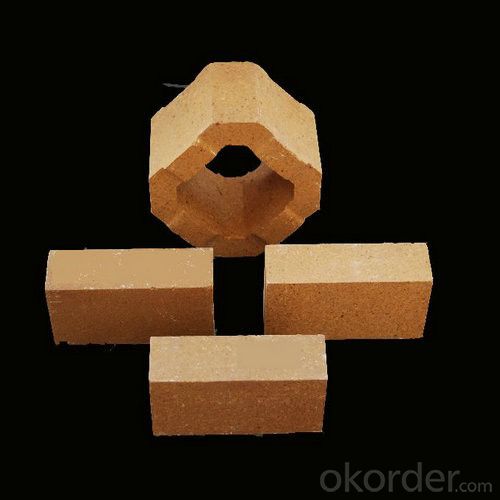
FAQ
Q1: How do you control the products quality?
A1: With strict quality control system throughout the materials selection and production process, our refractory and ceramic fiber products quality is effectively controlled to meet customer requirements.
From the raw materials selecting, our quality control begin. The quality certificates of raw materials are required and each batch will be tested before using. During production, the quality control are conducted by workers and then each piece will be sorted and examined by quality supervis
Q5: Can you give me a brief introduction of the application of your products?
A5: CNBM (China National Building Material) core refractory business comprises the production, sale and installation of high-grade refractory products, the development and implementation of customized system solutions as well as rendering outstanding services for the key industries in Glass, Iron& Steel, Petrochemical, Cement, Ceramic and Nonferrous Metals.
Open hearth futnace
Non-ferrous furnace
Glass tank regenerators
- Q:What's the use of refractory bricks?
- Refractory brick fire resistance is greater than 1580 degrees, and the average brick three or four Baidu softened deformation. The refractory brick because of its high refractoriness, and high pressure molding, and after high temperature kiln, so the use of strength is particularly good, practicality is particularly strong in high temperature liquid, gas with high temperature, high temperature solid, chemical corrosion products etc..
- Q:What are the main constituents of refractory bricks?
- According to the composition of refractory bricks, they can be divided into five major categories, namely, silicon aluminum refractory bricks, basic series refractory bricks, carbon containing refractory bricks, zirconium containing refractory bricks and insulating refractory bricks. Any furnace is not made of only one kind of refractory brick, and it needs different fire bricks to match with each other. The following five categories of refractory bricks are described in detail.
- Q:What's the weight of the refractory bricks?
- Light weight brick 1 to 1.7 kilograms; heavy clay superscript brick weighs 3.75 kilograms; light 30 plates 0.79 kilograms; light 40 plates, 1.05 kilograms
- Q:Just what is in the furnace material?
- Also called brick. Refractory material of a certain shape and size. According to the preparation process can be divided into bricks, brick, electric melting brick (Rong Zhuzhuan), the refractory insulating bricks; according to the shape and size can be divided into standard brick, brick, brick and other specific type.
- Q:What are ordinary bricks, refractory bricks, hollow bricks?
- Material. Light yellow or brownish. The utility model is mainly used for laying smelting furnaces, and can withstand high temperature between 1580 DEG C and 1770 DEG C. Also called brick. Refractory material of a certain shape and size.
- Q:Zirconium corundum 25 content and 40 content, how to distinguish in appearance?
- It is in the production process, zirconium corundum bricks are likely to cause pollution.
- Q:Outside wall tile (whole body smooth surface has small hole split brick) has cement pollution, with what product cleaning (cement, mortar, cleaning agent)?
- Tile has a long period of cement pollution, a variety of weak acid cleaning can be removed, such as oxalic acid, acetic acid and so on, of course, the use of special cleaning agent is perfect. But the cost is higher.
- Q:What are the specifications for bricks?
- Ordinary brick size of 240 mm * 115 mm * 53 mm, according to compressive strength (Newton / square millimeter, N / mm2) size is divided into MU30, MU25, MU20, MU15, MU10, MU7.5, these intensity levels. Clay brick materials, cheap, durable, and fire prevention, heat insulation, sound insulation, moisture absorption and other advantages, is widely used in civil engineering. Waste brick can also be used as aggregate of concrete. In order to improve the shortcomings of ordinary clay bricks, such as small, self important and waste of soil, they are developing in the direction of light weight, high strength, hollow and big blocks.
- Q:What is brick power, half brick power and full brick power difference?
- All brick power up to 500 watts up and down. The internal circuit is tight and heating, the device has good adhesion, the circuit is more advanced, and the efficiency is high, so it can achieve small size and high power.
- Q:Can the fire clay be reused?
- According to the preparation process can be divided into bricks, brick, electric melting brick (Rong Zhuzhuan), the refractory insulating bricks; according to the shape and size can be divided into standard brick, ordinary brick, specific rotation. It can be used as high temperature building materials and structural materials for construction kilns and various thermal equipments, and can undergo various physical, chemical and mechanical changes at high temperature.
1. Manufacturer Overview |
|
|---|---|
| Location | |
| Year Established | |
| Annual Output Value | |
| Main Markets | |
| Company Certifications | |
2. Manufacturer Certificates |
|
|---|---|
| a) Certification Name | |
| Range | |
| Reference | |
| Validity Period | |
3. Manufacturer Capability |
|
|---|---|
| a)Trade Capacity | |
| Nearest Port | |
| Export Percentage | |
| No.of Employees in Trade Department | |
| Language Spoken: | |
| b)Factory Information | |
| Factory Size: | |
| No. of Production Lines | |
| Contract Manufacturing | |
| Product Price Range | |
Send your message to us
Magnesite Refractories Brick for Cement and Non-ferrous
- Loading Port:
- Qingdao
- Payment Terms:
- TT OR LC
- Min Order Qty:
- 10 m.t.
- Supply Capability:
- 100000 m.t./month
OKorder Service Pledge
OKorder Financial Service
Similar products
New products
Hot products
Related keywords
